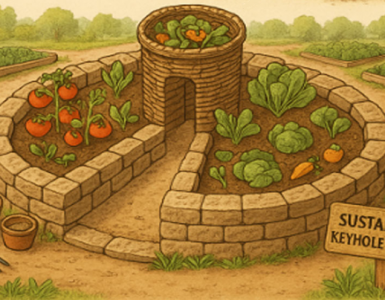Growing rice at home may seem like a daunting task, especially if you lack a large plot of land. However, with the right knowledge and approach, you can successfully cultivate this staple crop in containers right in your own backyard or balcony. In this guide, we’ll walk you through the steps to grow rice in containers at home, bringing the joy of homegrown grains to your table.
Choosing the Right Container:
Selecting the appropriate container is crucial for successfully growing rice at home. Opt for large containers that are at least 12 inches deep to allow ample space for root growth. Plastic tubs, wooden crates, or ceramic pots are all suitable options, as long as they have drainage holes at the bottom to prevent waterlogging.
Preparing the Soil:
Rice thrives in moist, well-draining soil with a slightly acidic pH level. Use a high-quality potting mix enriched with organic matter, such as compost or aged manure, to provide essential nutrients for healthy growth. Fill the container with the soil mixture, leaving about 2 inches of space at the top to prevent overflow when watering.
Planting Rice Seeds:
Rice seeds, also known as rice grains or paddy seeds, are readily available from garden centers or online suppliers. Before planting, soak the rice seeds in water for 24 to 48 hours to encourage germination. Once soaked, spread the seeds evenly over the soil surface in the container, pressing them gently into the soil.
Watering and Care:
Keep the soil consistently moist throughout the growing season, as rice plants require ample water to thrive. Water the container regularly, ensuring that the soil remains damp but not waterlogged. Rice plants also benefit from occasional foliar feeding with a balanced liquid fertilizer to promote healthy growth.
Sunlight and Temperature:
Place the container in a sunny location where the rice plants can receive at least 6 to 8 hours of sunlight daily. Rice is a warm-season crop that thrives in temperatures between 70°F and 90°F (21°C to 32°C). Protect the container from strong winds and provide shade during extreme heat to prevent stress on the plants.
Managing Growth:
As the rice plants grow, they will develop long, slender leaves and eventually produce panicles of rice grains. To support the tall stalks, insert stakes or trellises into the container and tie the plants gently as they grow. Remove any weeds that compete for nutrients and space in the container to prevent them from choking the rice plants.
Harvesting:
Rice typically matures and is ready for harvest within 3 to 6 months, depending on the variety and growing conditions. Monitor the plants closely as the grains ripen, looking for signs of golden color and firm texture. Harvest the rice by cutting the stalks at the base and allowing them to dry in a well-ventilated area for a few days.
Threshing and Storage:
Once dried, thresh the rice by gently beating the stalks against a hard surface to separate the grains from the husks. Winnow the rice by pouring it from one container to another in front of a gentle breeze to remove any remaining chaff. Store the harvested rice in airtight containers in a cool, dry place to maintain freshness.
Growing rice in containers at home is not only rewarding but also surprisingly achievable with the right techniques. By providing the proper care and environment, you can enjoy the satisfaction of harvesting your own rice crop, adding a unique touch to your homegrown produce and culinary endeavors. With a bit of patience and dedication, you’ll soon be enjoying the fruits of your labor in the form of delicious, homegrown rice dishes.






Add comment